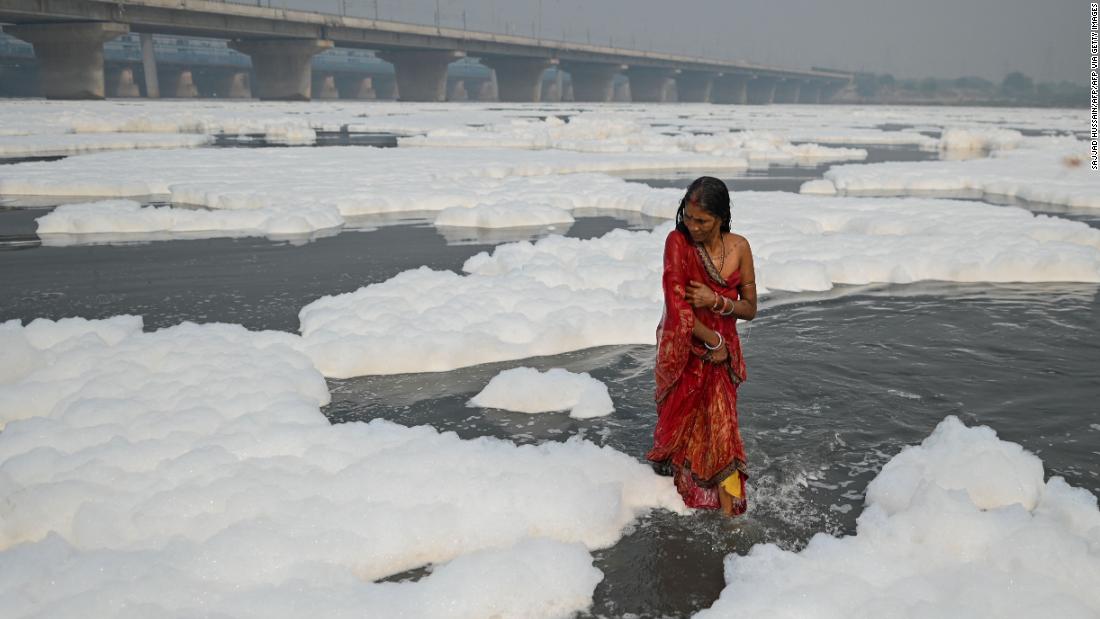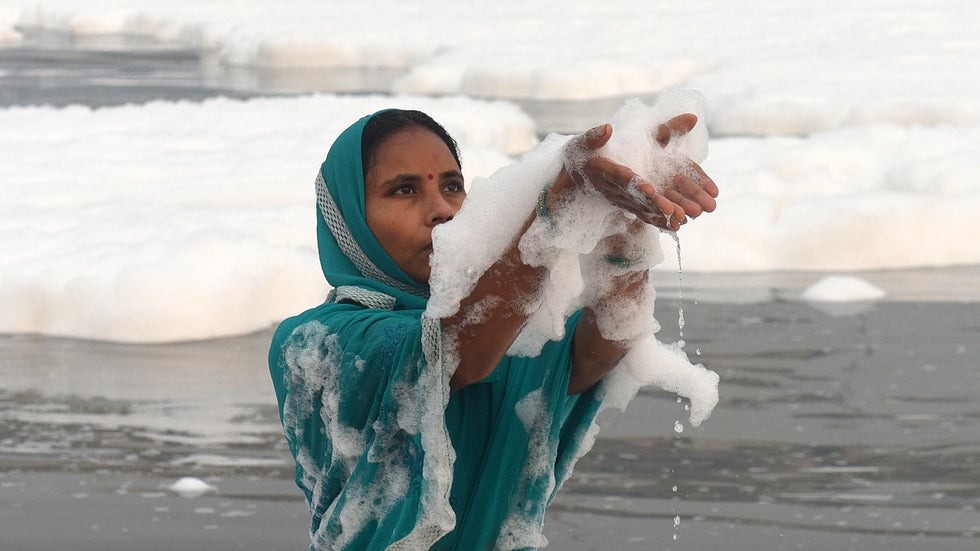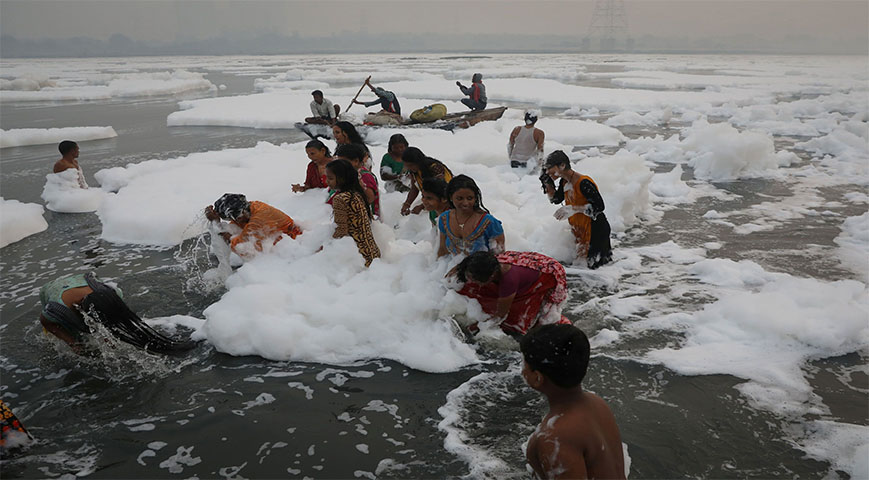The Sacred River near New Delhi was once coated with a thick layer of toxic foam as the Indian capital battles an acrid and noxious smog in the city.
The white froth, a mixture of sewage and industrial waste, has developed over sections of the Yamuna River, a tributary of the sacred Ganges River that flows through numerous states roughly 1,376 kilometers south of the Himalayas.

According to specialists, the unpleasant foam contains high quantities of ammonia and phosphates, which can cause respiratory and skin problems.
Its most recent arrival coincided with dangerous levels of pollution that affected many of New Delhi's more than 20 million citizens and caused the closure of primary schools and several offices.
According to the Press Trust of India, a similar-looking concoction has developed in a canal in India's southern Tamil Nadu state.

Strong gusts of wind push the froth onto the roadways and into the paths of automobiles and motorcyclists, according to a video released by the news agency on Thursday.
For decades, portions of the Yamuna have been afflicted by hazardous chemicals and untreated sewage dumping.
The river is black and sludgy in places, with plastic waste lining its banks.
Because of the dense population and high quantities of trash in the area surrounding Delhi, the river is most polluted.

Only 2% of the river's length passes through the city, yet according to a government monitoring body, Delhi contributes approximately 76% of the river's overall pollution.
The mixture is a common sight on the Yamuna, and despite its toxicity, many peasants downstream continue to bathe and even drink from it, according to specialists.
In September, images showed toxic foam accumulating on the Yamuna. Hindu devotees are frequently observed in the river, surrounded by dense foam, doing rituals.
This week, the hazardous foam in New Delhi was joined by a throat-searing layer of pollution, prompting many concerned residents to purchase air purifiers and wear face masks to limit their exposure to the chemicals.
.jpg)
According to the Swiss air quality company IQAir, New Delhi has been the most polluted city in the world for several days this week.
According to the firm, the city had an air quality index (AQI) of 517 on Thursday, considered hazardous.
Oslo, the world's least polluted city, has an AQI of barely three. Beijing, China's capital, which used to be on the list of the world's most polluted cities, has taken significant steps in recent years to clean its air and now has an AQI of 25 – a number considered “good.”









